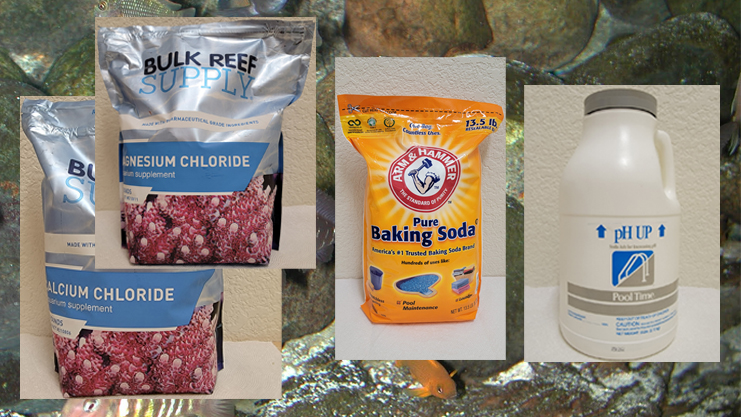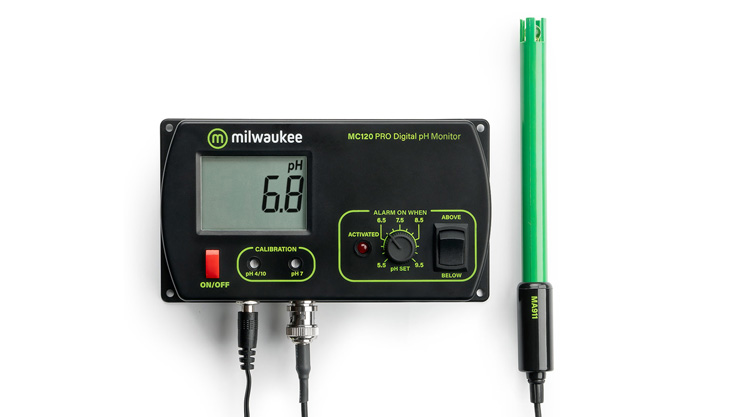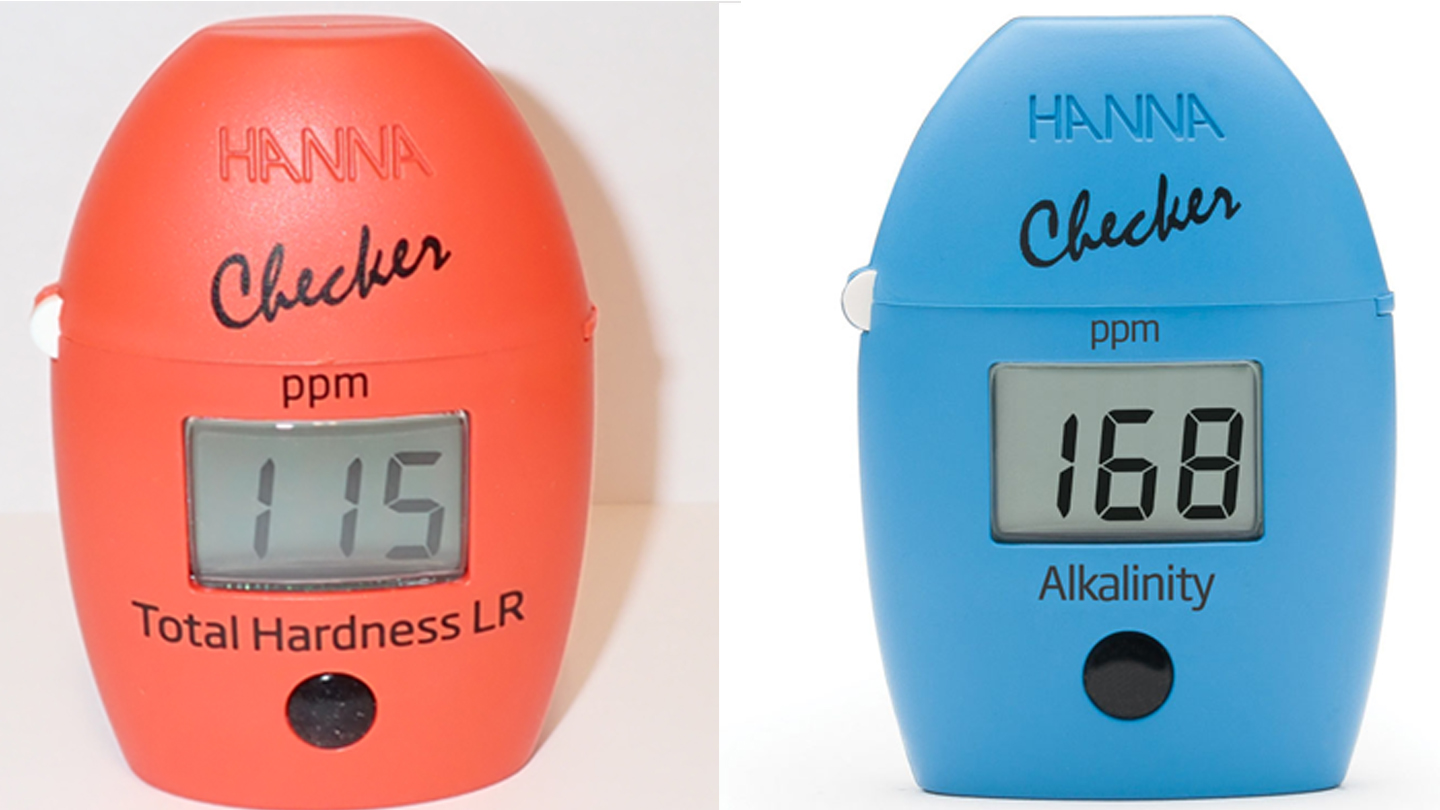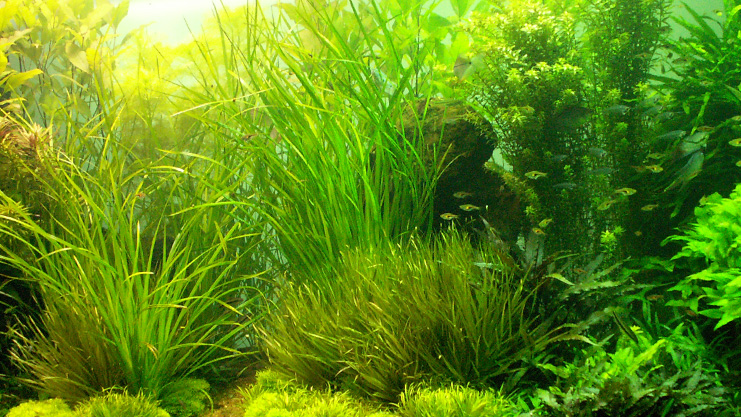Lake Tanganyika GH and KH Formula
Sodium Chloride (Salt) Free Formula

By Tony Griffitts
Published - 20241218, Revised:
Lake Tanganyika is the source of many aquarium fish for hobby. Hobbyists often keep many cichlids, killifish, Synodontis catfish, and spiny eels from Lake Tanganyika. Lake Tanganyika is known for its unique water chemistry, which has high general hardness (GH) and extremely high carbonate hardness (KH). GH and KH create osmotic pressure.
Osmotic pressure is required to prevent water from moving across a semi-permeable membrane due to osmosis. In freshwater, the environment is hypotonic (lower salt concentration) compared to the fish's body fluids. Water tends to enter the fish's body, and to prevent swelling, the fish excretes large amounts of dilute urine and actively absorbs salts through its gills.
Some hobbyists that keep fish that have evolved to live in the hard and alkaline water of Lake Tanganyika have suitable tap water for keeping these fish. However, for many hobbyists, tap water needs more GH and KH to keep these fish healthy in the long term.
Fish kept in the wrong water chemistry have an increased likelihood of organ failure, a common cause of dropsy/bloat.
Some hobbyists use reverse osmosis and deionizing tap water filters (RO/DI) that remove most of the GH and KH and undesirable molecules such as nitrate. Water collected from these filters must be remineralized with GH and KH increasers.
A whole-house water softener filter strips calcium and magnesium from the water. Homes with whole-house water softener filters must have the GH and possibly the KH adjusted.
Many aquarium manufacturers make products addressing soft tap and RO/DI water that is low in GH and KH. These products are often marketed as cichlid salt and alkalinity boosters.
Hobbyists will find it more economical to buy the generic ingredients of these minerals and make their own GH and KH increasers. The generic ingredients for GH and KH have multiple uses in other industries and are common ingredients for marine reef systems that are dosed individually.
When hobbyists examine water chemistry, the primary measurements are general and carbonate hardness.
GH, is the amount of calcium and magnesium in the water.
KH, is the amount of bicarbonate and carbonate in the water.
GH (Total Hardness)
A system's calcium/magnesium ratio (Ca/Mg ratio) will directly affect the amount of bicarbonate/carbonate in the solution. Higher ratios of magnesium will support higher levels of carbonate. Knowing the relationship between magnesium and KH is important when working with high pH (greater than 7.8) systems.

Aquarium trade manufacturers often market products with calcium and magnesium mixed in a single container. The ratios in these products are typically formulated to target specific water chemistry, and the recommended dosage is for distilled or reverse osmosis water.
Separately adding calcium and magnesium gives hobbyists greater control over the Ca/Mg ratio. Adding calcium to tap water before increasing the magnesium could result in calcium precipitating out of the solution with carbonate in the water.
The preferred products for raising GH are magnesium chloride and calcium chloride. Magnesium chloride and calcium chloride chemicals are commonly available from online reef retailers and in generic form from many other industries.
KH (Alkalinity)
Carbonate hardness (KH) measures the carbonate and bicarbonate anions. The reason for the “K” in KH is that the original measure comes from the German word for carbonate, which starts with a “K.”
The stability of KH is directly related to the Ca/Mg ratio. Higher ratios of magnesium can support higher levels of KH and pH. Low magnesium levels can cause the system's KH and GH to drop.
pH is directly related to KH. For systems where the target pH is 7.8 or lower, bicarbonate (HCO3) is used to increase KH. For systems with a pH above 7.8, carbonate is introduced to keep the pH at higher levels. Carbonate (CO3) radically affects pH and is typically only used when maintaining high pH systems.
Cloudy white precipitation (calcium carbonate) occurs when sodium carbonate is added to the water with a low magnesium level.
KH buffers (increasers) for systems with high pH have a HCO3/CO3 ratio. Primarily made up of HCO3, CO3 ratios increase as the target pH increases.
The preferred products for raising KH are sodium bicarbonate and sodium carbonate. Sodium bicarbonate (baking soda) and sodium carbonate (soda ash) chemicals are commonly available from online reef retailers and in generic form from many other industries.
Other Elements of Note
The surface water of Lake Tanganyika also contains sodium and chloride:
- Sodium - 60 ppm
- Chloride - 38 ppm
Sodium and chloride elements are added in small amounts when the GH and KH are raised.
Total Dissolved Solid (TDS) measures electrical conductivity (EC) and converts it to ppm. TDS is best used as a tool to determine the efficiency of RO/DI systems. TDS only shows the conductance of the water, it does not show what elements and the amount make up the result. TDS can only be used as a tool to measure the before and after results when adding chemicals that have EC. TDS data has been collected at Lake Tanganyika by researchers:
- TDS - 441 to 455 ppm
Water chemistry analysis from multiple field surveys of Lake Tanganyika shows about a 1 to 4 Ca/Mg ratio. Published research shows the GH of surface water from Lake Tanganyika is around 11 dGH.
The surface pH of Lake Tanganyika was often measured just above 9. KH of 18 to 20 dKH (320 ppm to 350 ppm) with carbonate (CO3) as high as 190 ppm (mg/l). Some studies report HCO3 (bicarbonate) chemical species make up the majority of alkalinity (carbonate hardness [KH]).

Research measurements of pH in Lake Tanganyika range from 8.5 to 9.1. The time of day pH measurements are taken is not stated in the research. pH can drastically vary between night and day, so the data collected can only be used as a general baseline. Because Tanganyikan systems can have pH above 9, it is recommended that the system have a pH monitor that provides a digital measurement. Many liquid test kits do not measure pH above 8.8.
Establishing a baseline pH, KH, and GH is essential before adjusting water chemistry. Testing tap pH requires allowing it to gas off any excess CO2, O2, or other gasses that may temporarily affect the pH. Filling a glass with water and aerating for 10 minutes will allow for gas equilibrium before the water is tested. Allowing tap water to gas off can significantly affect the pH test results (-0.9 pH difference [8.7 to 7.8] with the author's tap water).
Adding minerals to the water is an easy process, and it does not take a lot of dry chemicals to raise the levels. Typically, most hobbyists will use 1 level teaspoon or less of a compound per 10 gallons (4 L) to raise the concentration.
The initial purchase of the dry chemicals will last most hobbyists for years. Typically, general hardness and carbonate hardness are adjusted when completing a water change. Carbonate hardness may need to be adjusted between water changes depending on biomass and how frequently water changes are done.
The volume of a system must be known before adjusting the water chemistry. Typically, when adding minerals to the system for the first time, the hobbyist must calculate the volume. The volume includes the inside dimensions of the aquarium plus the amount of water in external filters and tubing minus substrate and decor. This will provide a good enough estimate to make adjustments.
The volume of the aquarium in gallons is calculated on the length times width times height in inches, divided by 231 will equal gallons.
- Volume = Length x Width x Height / 231
For liters, measure in centimeters and divide by 1000 to provide liters.
- Volume = Length x Width x Height / 1000
When doing water changes, compounds are added based on the volume of the new water. GH typically remains relatively stable and only gets used very slowly. KH may require an additional amount of a compound because plants and bacteria use it at much higher rates than GH.
API GH and KH liquid test kits are popular with hobbyists and measure in degrees of hardness or dGH and dKH. One degree equals 17.86 parts per million (ppm).
Hanna Checker colorimeters are gaining popularity in the aquarium hobby. Hanna Checkers measure in ppm and provide an easy-to-read digital display. The Hanna “Total Hardness LR” (HI735) checks the GH in freshwater systems. The “Hanna Freshwater Alkalinity” (HI775) checks the KH.

Target ranges of GH and KH for Tanganyika Systems
- Total Hardness (GH) - 200 ppm (11 dGH)
- Alkalinity (KH) range - 320 to 350 ppm (18 to 20 dKH)
Hobbyists should dissolve all chemicals in a container of water before adding them to the system in a high-flow area. Dumping undissolved chemicals into the system will kill microbes in the substrate and can damage plants.
If the source water already has a moderate amount of GH and KH, the amount of compounds used should be reduced by the percentage of GH and KH already present.
The order in which chemicals are added to the system is important to prevent the precipitation of calcium carbonate:
- Magnesium
- Calcium
- Bicarbonate
- Carbonate (high pH systems only)
Note that calcium chloride gets warm when it comes in contact with water.
All dosages are per 10 Gallons (40 L).
GH Formula (Increase GH by 10 dGH)
Magnesium Chloride (MgCl2) - 2.5 tsp (8 g)
Calcium Chloride (CaCl2) - .25 tsp (1.250 g)
KH Formula (Increase KH by 18 [+/- 2] dKH)
Sodium Bicarbonate, AKA Baking Soda (NaHCO3) - 2 tsp (5.8) = 10 dKH
Sodium Carbonate, AKA Soda Ash (Na2CO3) - 1 tsp (5.5 g) = 8 dKH
Hobbyists may need to add an additional .25 teaspoon of sodium carbonate after 48 hours to reach 18 to 20 dKH. If the pH is holding at 9 but the KH is lower than 18 dKH, use sodium bicarbonate to raise the KH.
1. Alain Niyongabo, Yiqing Guan, Danrong Zhang, Wang Ziyuan; Water quality characteristics of Lake Tanganyika in Burundi and Lake Victoria in Uganda. Water Practice and Technology 1 August 2023; 18 (8): 1756–1774.
https://doi.org/10.2166/wpt.2023.120
2. Lambert Niyoyitungiye. Limnological Study of Lake Tanganyika, Africa with Special Emphasis on Piscicultural Potentiality. Biodiversity and Ecology. Assam University Silchar (Inde), 2019. English. ⟨NNT : ⟩. ⟨tel-02536191⟩,
https://hal.science/tel-02536191/
3. Felicity Smith, A preliminary investigation of some chemical and physical profiles of Lake Tanganyika,
https://www.geo.arizona.edu/nyanza/pdf/smith.pdf
4. Lake Tanganyika, Analyses of Lake Water, Dr. Andreas Kremser,
https://www.drak.biz/guide/compendium/tanganyika



